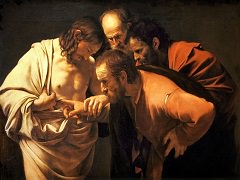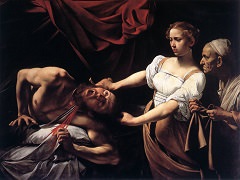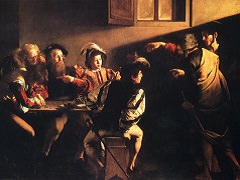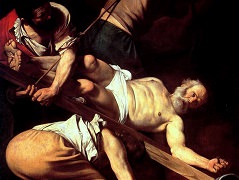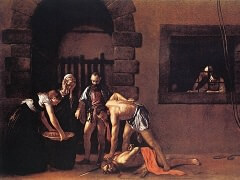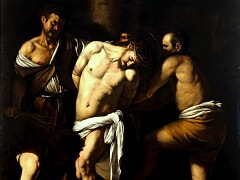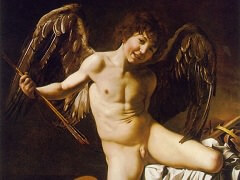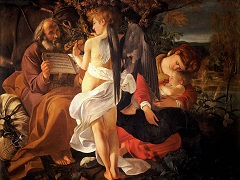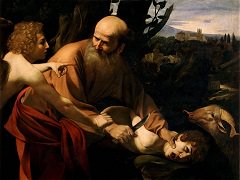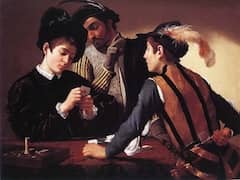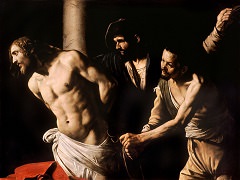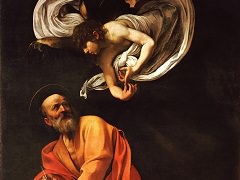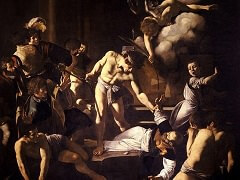The Incredulity of Saint Thomas, 1603 by Caravaggio
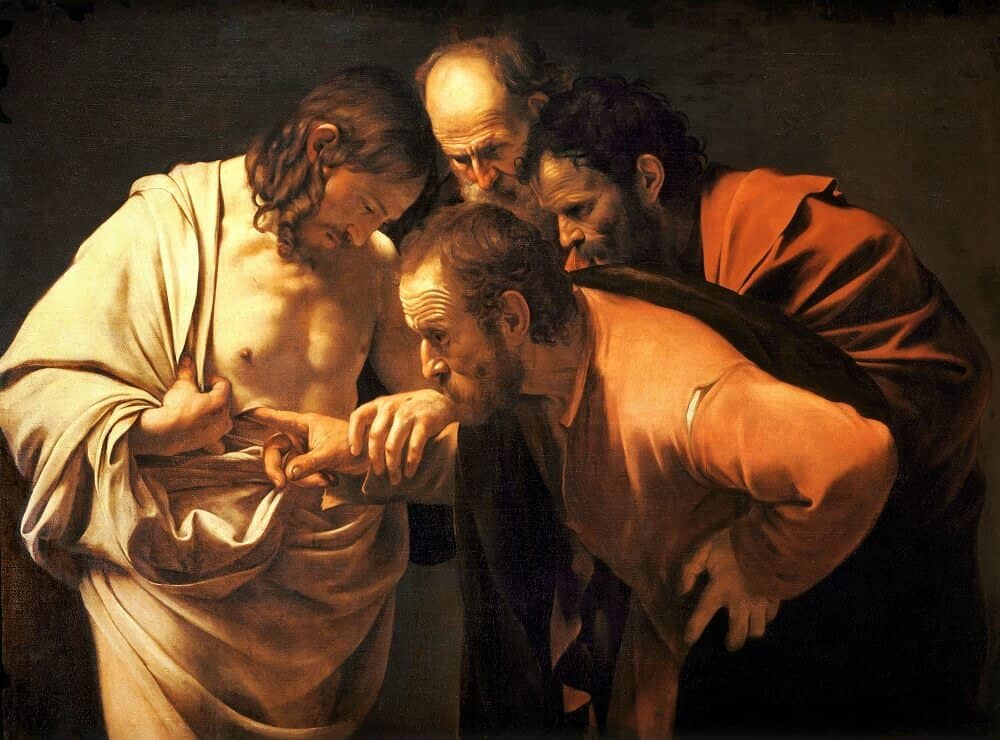
The Incredulity of Saint Thomas is without any accessories or any indication of setting. It is tensely concentrated, compact within a solid Romanesque archway formed by the outline of the four figures clustered intimately together against a dark background. The focus is on Saint Thomas's right hand, firmly guided by Christ's, as the stolid doubter carefully prods the wound with his index finger. Tellingly, the hands of the other two apostles are concealed, although their curiosity is undisguised and scarcely less restrained than Thomas's. All three apostles are portrayed as rustic materialists without imagination or tact. They do not question Christ's identity but are fascinated by his wound as a tangible phenomenon, physical evidence of His existence as a man in their corporeal world, although no longer of it. Christ, who is understanding, indulgent rather than reproachful, is without a halo or any other sign of His divinity. His trim athletic torso contrasts with Thomas's burly form, and His physiognomy is more refined than the apostles'. But He comes to them as a man made of flesh and blood rather than as a disembodied spirit, so His resurrection is apprehended in their literal terms, and is all the more miraculous. The message is again one of faith; Christ's words were: "Because thou hast seen me, Thomas, thou hast believed: blessed are they that have not seen and have believed"
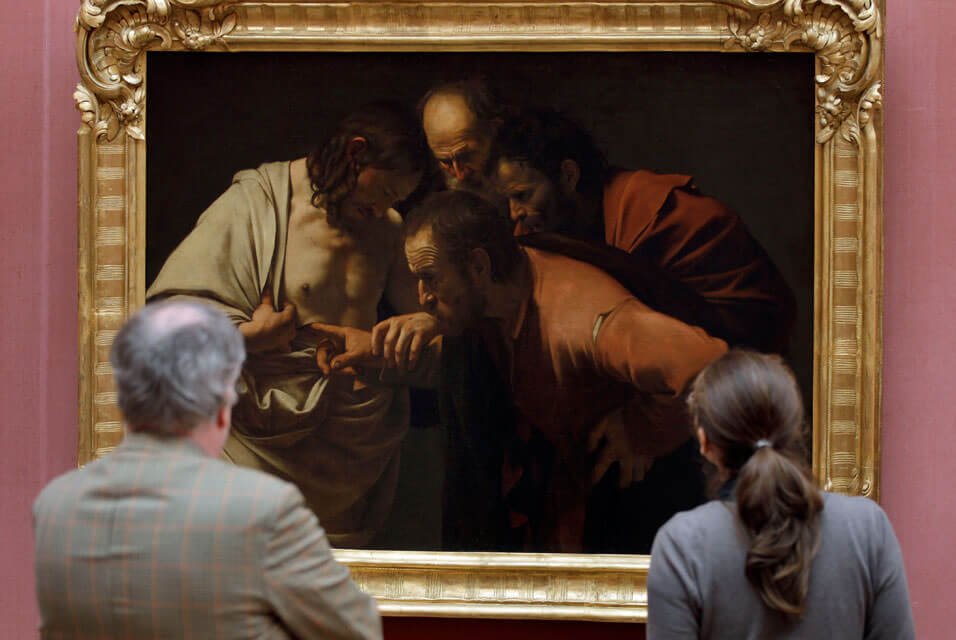
The motif of the hands is an old one, the device of Saint Thomas's finger perhaps inspired by a Diirer print. Surprisingly, only Malvasia, the propagandist for Bolognese painting, faulted the picture as indecorous. It was much copied, even while Caravaggio was still alive. Cardinal del Monte, Ciriaco Mattel, Prince Ludovisi, and the duke of Savoy all owned versions of it, so its lack of obvious mysticism and its psychological penetration must have struck a contemporary response.

